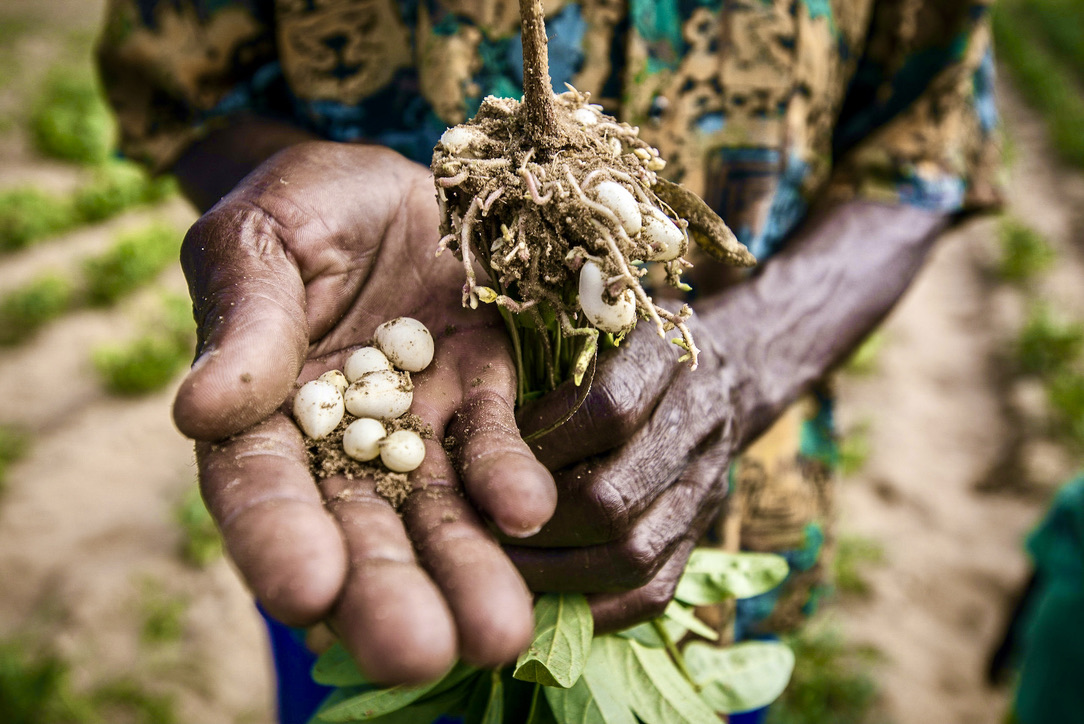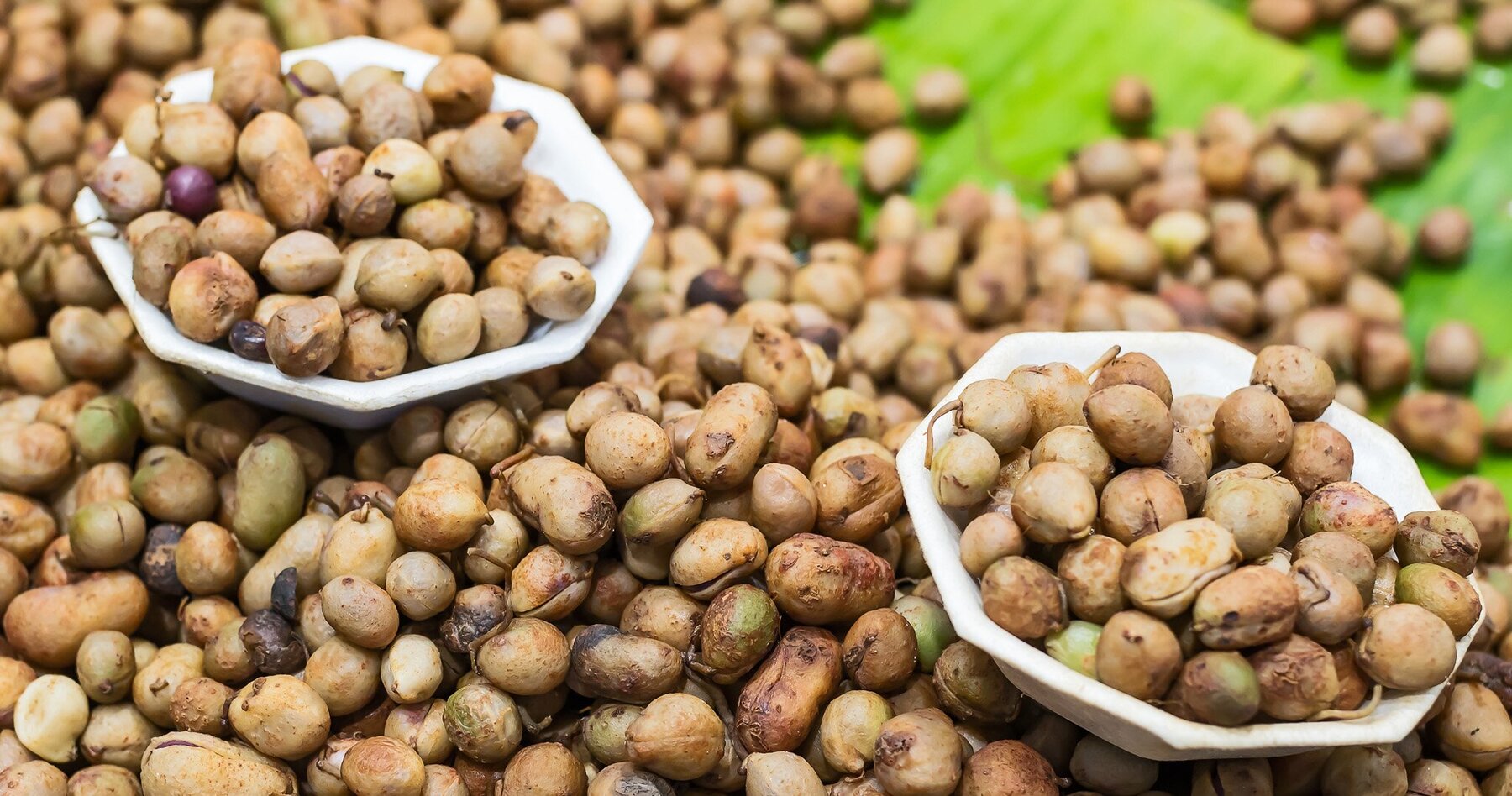Bambara Groundnut
Why Bambara groundnut?
Bambara groundnut [Vigna subterranea (L.) Verdc] is a grain legume grown mainly by subsistence farmers in semi-arid West Africa, where it is the third most important grain legume. It tolerates high temperatures and drought, fixes nitrogen and grows well on poor soils. It is cultivated for its subterranean pods, is extremely hardy and produces reasonable yields even under conditions of drought and low soil fertility. The pods are approximately 1.5 cm long, and may be wrinkled and slightly oval or round, containing one to two seeds. The color of the seeds varies from black, dark-brown, red, white, cream or a combination of these colours. At harvest, i.e. when the pods ripen, the plant is extracted from the soil, exposing the subterranean nuts.
What we achieved
-
17 samples of Vigna subterranea var. spontanea, the wild relative of Bambara groundnut, were collected in Nigeria. This species had previously been missing from genebanks.
Project partners
Collecting
- National Centre for Genetic Resources, Ibadan, Nigeria
Bambara groundnut key collections, materials and data
Bambara groundnut collections
- The largest Bambara groundnut collection is conserved at the International Institute of Tropical Agriculture, Ibadan, Nigeria.
- The Genesys PGR database includes information about Bambara groundnut accessions in genebanks worldwide


